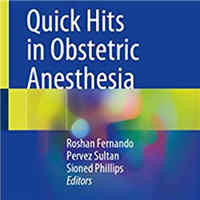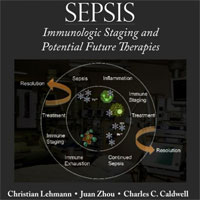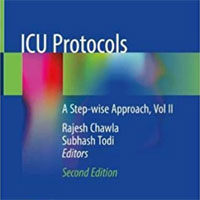Tag: resuscitation
Percussion Pacing – An Almost Forgotten Procedure for Hemodynamically Unstable Bradycardias?
More than 80 years after its first description by Eduard Schott, percussion (fist) pacing remains a little known procedure even though it represents an instantly available and easy to perform treatment for temporary emergency... read more
Resuscitation with Blood Products in Patients with Trauma-related Hemorrhagic Shock Receiving Prehospital Care
The trial did not show that prehospital PRBC–LyoPlas resuscitation was superior to 0·9% sodium chloride for adult patients with trauma related hemorrhagic shock. Further research is required to identify the characteristics... read more
Palliative Care Consultation and End-of-life Outcomes in Hospitalized COVID-19 Patients
Palliative care consultation was not associated with CPR performed at the end-of-life but was associated with increased incidence of comfort care being utilized. These results suggest that utilizing palliative care consultation... read more
Balanced Fluid Resuscitation for the Critically-Ill: the PLUS study mirrors the BaSICS
Intravenous fluid therapy is one of the most commonly-performed interventions in all of critical care medicine. Numerous trials over the last 20 years have attempted to identify the ideal fluid for those in the intensive... read more
Quick Hits in Obstetric Anesthesia
This book provides easy to follow guidance on how to manage emergency situations and common problems in obstetric anesthesia. The book provides different anesthetic recipes for obstetric procedures and describes challenges... read more

Effect of Intra-arrest Transport, ECPR, and Treatment on Functional Neurologic Outcome
Among patients with refractory out-of-hospital cardiac arrest, the bundle of early intra-arrest transport, extracorporeal cardiopulmonary resuscitation (ECPR), and invasive assessment and treatment did not significantly improve... read more
Arterial pH with Hemodynamic Response Association to Vasopressin in Patients with Septic Shock
Compared with higher arterial pH, patients with septic shock and low arterial pH had lower odds of vasopressin response and higher catecholamine doses after vasopressin initiation. Similar to other vasopressors, the clinical... read more
Resuscitation Using ECPR During In-Hospital Cardiac Arrest Mortality Prediction Score
The RESCUE-IHCA score can be used by clinicians in real time to predict in-hospital death among patients with in-hospital cardiac arrest (IHCA) who are treated with extracorporeal cardiopulmonary resuscitation (ECPR). A... read more
Guidelines on Temperature Control After Cardiac Arrest in Adults
The aim of these guidelines is to provide evidence‑based guidance for temperature control in adults who are coma‑tose after resuscitation from either in-hospital or out-of-hospital cardiac arrest, regardless of the underlying... read more
ERC-ESICM Guidelines on Temperature Control After Cardiac Arrest in Adults
The aim of these guidelines is to provide evidence‑based guidance for temperature control in adults who are comatose after resuscitation from either in-hospital or out-of-hospital cardiac arrest, regardless of the underlying... read more
Peri-arrest Bolus Epinephrine Practices Amongst Pediatric Resuscitation Experts
In this multinational survey of pediatric resuscitation experts, endorsement of peri-arrest bolus epinephrine use was nearly universal, though a few clinicians cited lack of evidence to support this practice. There was... read more
New Resuscitation Guidance for Patients with COVID-19
In response to the COVID-19 pandemic, the American Heart Association and collaborating organizations, including the American Academy of Pediatrics, the American Association for Respiratory Care, the Society of Critical Care... read more
Optimal CPR Duration for Favorable Neurological Outcomes After OHCA
A favorable neurological outcome is closely related to patient characteristics and total cardiopulmonary resuscitation (CPR) duration. The total CPR duration consists of pre-hospital and in-hospital durations. To... read more
Change in Out-of-Hospital 12-lead ECG Diagnostic Classification in Patients Resuscitated From OHCA
Change in 12-lead ECG classification from OH to ED setting in patients resuscitated from out-of-hospital cardiac arrest (OHCA) was common (49%). The OH STEMI classification changed to a less ischemic (non-STEMI) ED classification... read more
Saline vs. Balanced Crystalloid in Patients with Diabetic Ketoacidosis
In patients with diabetic ketoacidosis (DKA), the use of saline may be associated with longer time to DKA resolution, higher post-resuscitation serum chloride levels, lower post-resuscitation serum bicarbonate levels, and... read more
Extracorporeal Cardiopulmonary Resuscitation (ECPR) in Adults
Rates of survival with functional recovery for both in-hospital and out-of-hospital cardiac arrest are notably low. Extracorporeal cardiopulmonary resuscitation (ECPR) is emerging as a modality to improve prognosis by augmenting... read more
A New Acronym to Select Eligible Patients for ECPR
Rhythm check three - A2BCDE3! - A new acronym to select eligible patients for extracorporeal cardiopulmonary resuscitation (eCPR) Extracorporeal cardiopulmonary resuscitation (eCPR) is an ultra-invasive approach for the... read more
High resuscitative endovascular balloon occlusion of the aorta procedural volume is associated with improved outcomes
Resuscitative endovascular balloon occlusion of the aorta survival is increased at high versus low utilization centers. Increased experience with REBOA may be associated with earlier deployment and subsequently improved patient... read more
Which Injured Patients with Moderate Fibrinogen Deficit Need Fibrinogen Supplementation?
We have shown in this study an association between shock parameters and fibrinogen administration. Further studies are needed to determine how these parameters may be used to guide fibrinogen administration in trauma patients... read more
Feasibility of Conservative Fluid Administration and Deresuscitation vs. Usual Care
A strategy of conservative fluid administration and active deresuscitation is feasible, reduces fluid balance compared with usual care, and may cause benefit or harm. In view of wide variations in contemporary clinical... read more
Neurological Outcomes in Patients with OHCA who received ECPR
Little is known about the difference in outcomes between young and old patients who received extracorporeal cardiopulmonary resuscitation (ECPR) for out-of-hospital cardiac arrest (OHCA). Therefore, we aimed to investigate... read more
Severe Hyponatremia Management with DDAVP Clamp-Bolus Technique
The DDAVP clamp technique has considerably simplified the management of severe hyponatremia. The DDAVP clamp was a substantial step forwards in the management of severe hyponatremia. It eliminated a lot of the variability... read more









